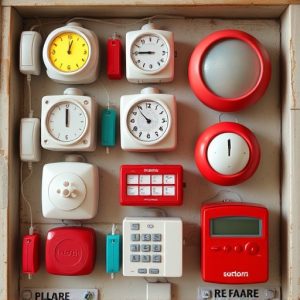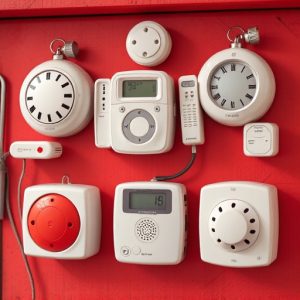Personal Safety Devices: Understanding Alarms’ Range and Features for Emergencies
Personal alarm systems are crucial tools for safety, emitting loud sounds (up to 400 meters) to attr…….
Personal alarm systems are crucial tools for safety, emitting loud sounds (up to 400 meters) to attract attention and signal distress. Modern alarms feature adjustable volume, strobe lights, vibration mechanisms, and customizable settings for manual or sensor activation. Their effectiveness in emergency situations depends on factors like urban noise, terrain, weather, and sound intensity, with high-decibel models (over 100dB) ensuring maximum attention. Key features include water resistance, long battery life, easy activation, compact design, and GPS tracking for precise location sharing, enhancing personal safety.
Personal safety is paramount, especially in emergency situations. This article explores personal alarm systems, essential tools designed to signal distress and summon help quickly. From understanding various types and their functionality to examining how far these alarms can be heard (How Far Personal Alarm Sounds), we guide you through critical features for effective emergency devices. By the end, you’ll be equipped with knowledge to make informed choices for your safety.
- Understanding Personal Alarm Systems: Types and Functionality
- The Impact of Distance: How Far Can a Personal Alarm Be Heard?
- Essential Features to Consider for Effective Emergency Devices
Understanding Personal Alarm Systems: Types and Functionality
Personal alarm systems are a crucial tool for personal safety, designed to attract attention and signal distress in emergency situations. These devices typically emit loud, piercing sounds that can travel up to 400 meters (approximately 1,300 feet) in ideal conditions, ensuring they are heard even at a distance. Modern personal alarms come in various types, each offering unique features for different needs.
There are several key components that define their functionality. The core is a high-decibel alarm sound produced by a built-in speaker, often with adjustable volume levels. Many also incorporate strobe lights or vibration mechanisms to provide multi-sensory alerts. Some advanced models feature customizable settings, allowing users to set off the alarm with a push button or automatically in response to sensor triggers, like movement or impact. These versatile devices can be carried as hand-held units, attached to clothing or personal items, or even integrated into smart home security systems for comprehensive protection.
The Impact of Distance: How Far Can a Personal Alarm Be Heard?
In emergency situations, the range at which a personal alarm can be heard is a significant factor in ensuring help arrives promptly. The distance a personal alarm sounds can vary greatly depending on several factors, such as the environment, terrain, and weather conditions. In ideal scenarios, high-decibel personal alarms can be heard from up to 500 feet away, making them an effective deterrent against potential threats and drawing attention from passersby or nearby emergency services.
However, it’s important to note that real-world conditions often affect this range. Urban areas with tall buildings and heavy traffic might echo or muffle the sound, while open fields or forests could reflect or absorb the alarm’s signal. Additionally, the type of personal alarm, its power source, and the altitude at which it is used can also play a role in determining how far its distress signal will travel.
Essential Features to Consider for Effective Emergency Devices
When choosing a personal safety device, several key features determine its effectiveness in an emergency. One critical aspect is the sound intensity of the alarm, particularly how far it can project its range. A loud and high-pitched sound attracts attention quickly, warning passersby and potentially deterring attackers. Look for devices with alarms that can reach decibel levels exceeding 100dB, ensuring maximum audibility in diverse environments.
Additionally, consider features like water resistance, long battery life, easy activation mechanisms, and compact design for portability. Some advanced models offer GPS tracking, allowing emergency services to pinpoint your location precisely. These smart designs enhance personal safety by providing a comprehensive solution that caters to various emergency scenarios.
Personal safety devices, particularly personal alarm systems, play a vital role in emergency situations. By understanding different types and their functionality, as well as essential features like sound intensity and range (how far a personal alarm sounds), individuals can empower themselves to effectively respond to dangerous scenarios. Knowing the distance at which these alarms can be heard is crucial for ensuring help arrives promptly. With the right device, one can navigate emergency situations with increased confidence and security.


